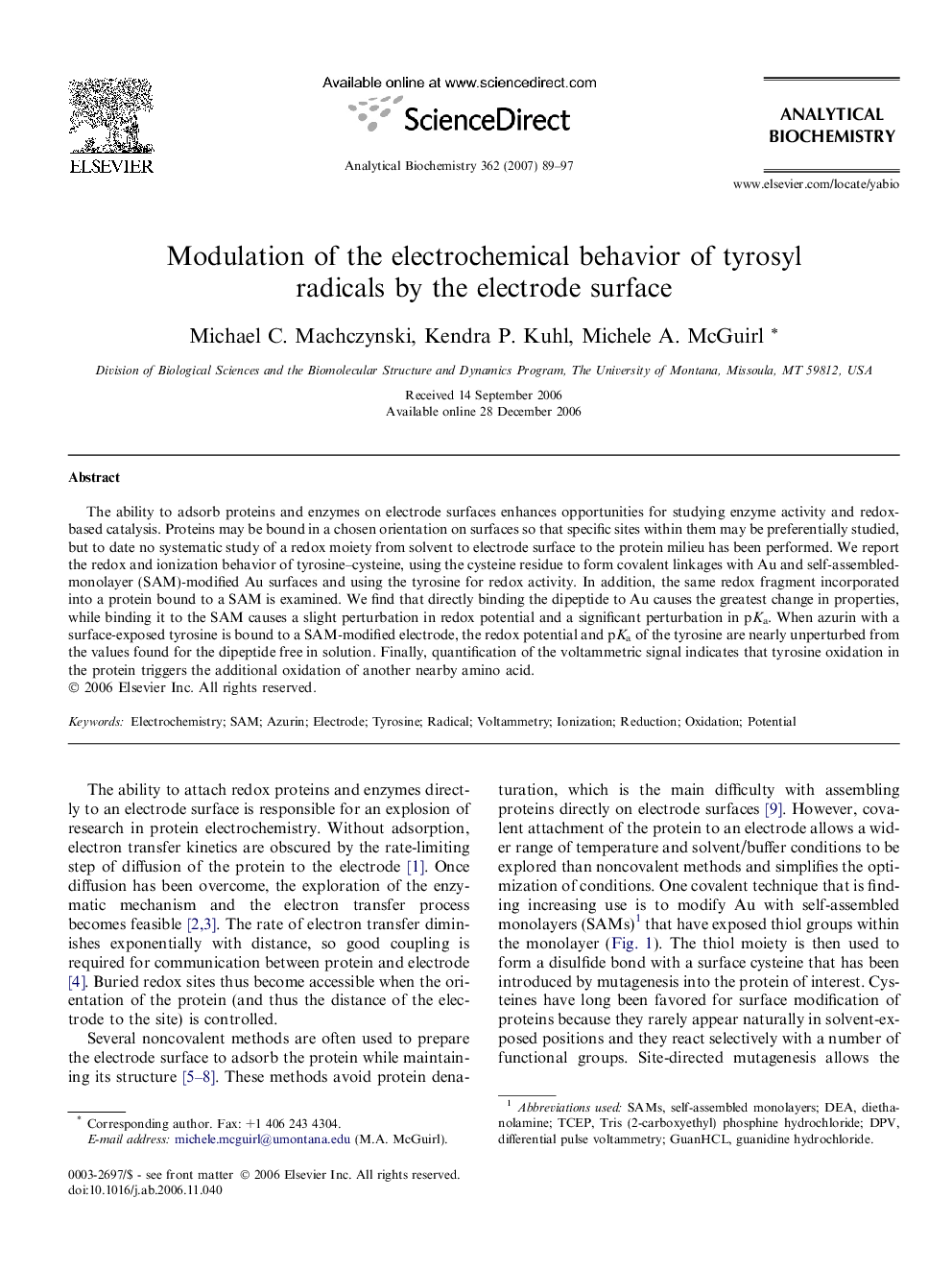| Article ID | Journal | Published Year | Pages | File Type |
|---|---|---|---|---|
| 1177407 | Analytical Biochemistry | 2007 | 9 Pages |
Abstract
The ability to adsorb proteins and enzymes on electrode surfaces enhances opportunities for studying enzyme activity and redox-based catalysis. Proteins may be bound in a chosen orientation on surfaces so that specific sites within them may be preferentially studied, but to date no systematic study of a redox moiety from solvent to electrode surface to the protein milieu has been performed. We report the redox and ionization behavior of tyrosine-cysteine, using the cysteine residue to form covalent linkages with Au and self-assembled-monolayer (SAM)-modified Au surfaces and using the tyrosine for redox activity. In addition, the same redox fragment incorporated into a protein bound to a SAM is examined. We find that directly binding the dipeptide to Au causes the greatest change in properties, while binding it to the SAM causes a slight perturbation in redox potential and a significant perturbation in pKa. When azurin with a surface-exposed tyrosine is bound to a SAM-modified electrode, the redox potential and pKa of the tyrosine are nearly unperturbed from the values found for the dipeptide free in solution. Finally, quantification of the voltammetric signal indicates that tyrosine oxidation in the protein triggers the additional oxidation of another nearby amino acid.
Keywords
Related Topics
Physical Sciences and Engineering
Chemistry
Analytical Chemistry
Authors
Michael C. Machczynski, Kendra P. Kuhl, Michele A. McGuirl,
